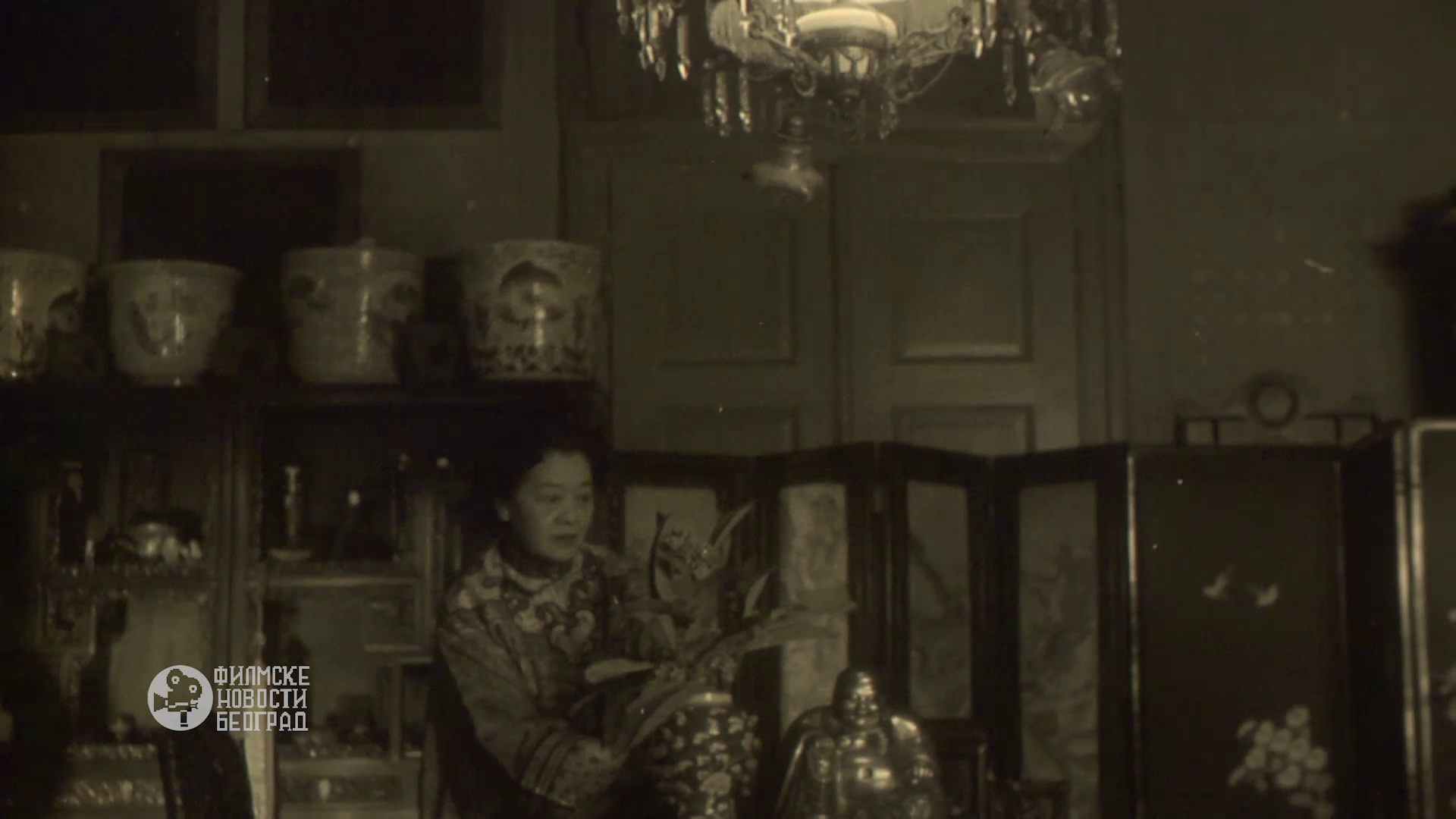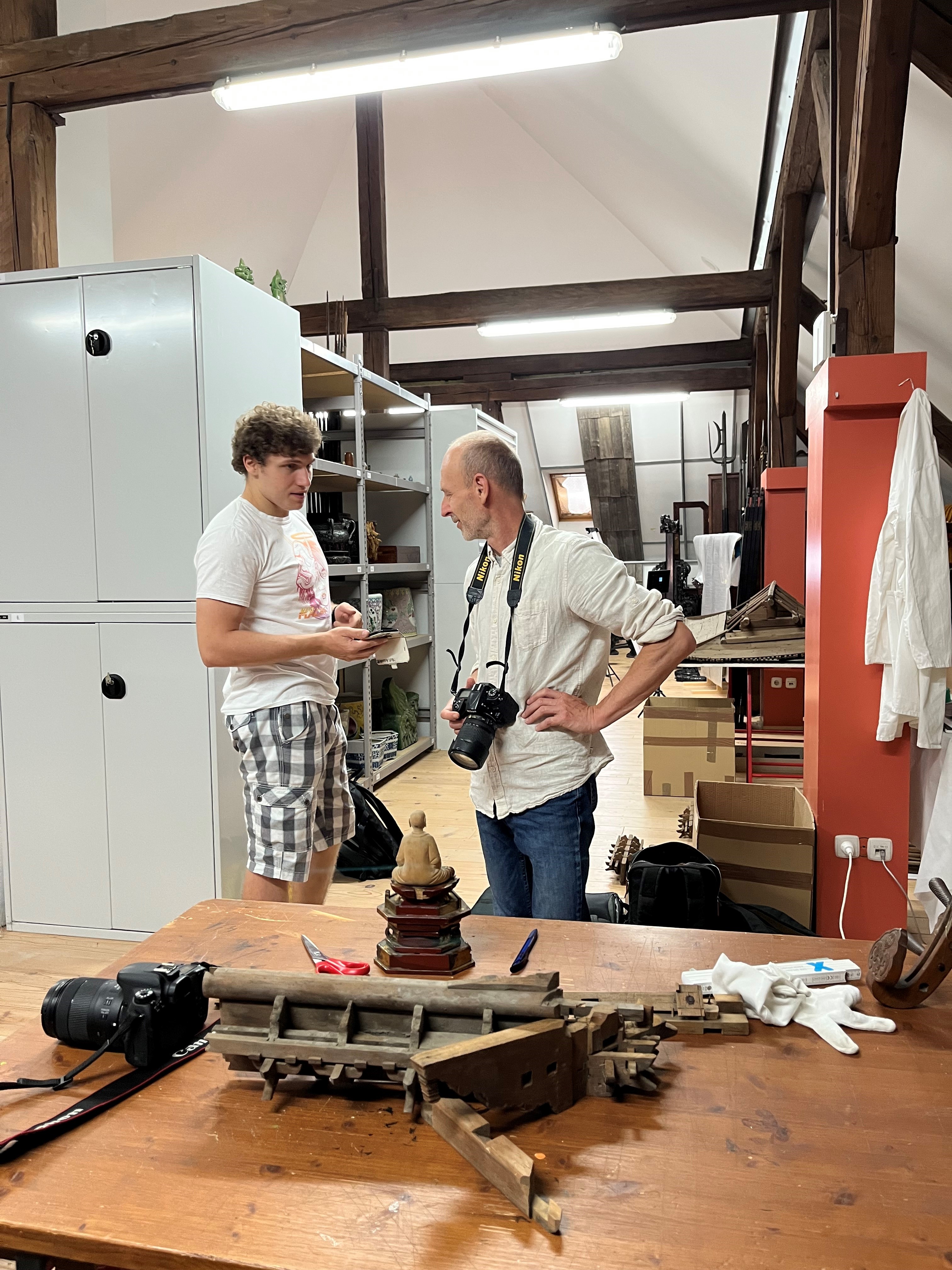A virtual time capsule...

Filmske novice 1:
Zanimiva zbirka. Avtor Vladimir Perišić © Filmske novosti Beograd,1957. https://www.youtube.com/watch?v=tFDnA8UzBr0
On September 8, 1920, Ivan Skušek Jr. and his wife Tsuneko Kondo Kawase (left), together with her two children, arrived at Ljubljana.
Ivan Skušek had served as a commissioner to the sea in the Austro-Hungarian navy and had been on board of the vessel Kaiserin Elisabeth on a mission to China when World War 1 broke out. The Kaiserin Elisabeth sunk in the battle of Tsingtao, at the beginning of the war, as the Japanese army attacked the German colony. The Austro-Hungarians were either taken to Japan as POWs or were practically stranded in China. In 1917, when China officially declared war to the Austro-Hungarian Monarchy, the Austro-Hungarian detachment was imprisoned and they were officially released only in 1920. A few months later, the Skušeks embarked on a ship in Shanghai for a passage to Marseille – leaving China for a post-WW1 Slovenia which was unfamiliar not only to the Japanese woman. A month later several dozens of boxes filled with all kinds of Chinese art objects followed via a different route. The circumstances under which Ivan Skušek could acquire such a mass of Chinese art are not yet completely clear. Most of the pieces were from the Qing Dynasty of the Manchu emperors, the last dynasty of China. At the time of acquisition (ca. 1915-1920), the majority of the objects were not yet antiquities in the classical sense, as they had been produced during the final phase of the Qing period just a few decades earlier. Still, a few pieces, especially the religious objects such as several metal works depicting Buddhist Tantric deities, are datable to the early Qing Dynasty.
...and snapshot of Curatorial Heritage
As Ivan Skušek’s idea of establishing a museum for Asian art in Ljubljana never became a reality, the selected pieces from the collection – furniture, porcelain, textiles, pipes, and even the sculptures – became part of their everyday life as the couple decorated and embellished their flat with the various items. The collection continued through all their living spaces, as they occupied three different flats over the decades to come. After Tsuneko’s death in 1963, the collection was moved to the Slovenian Ethnographic Museum (SEM).
In March 2023, a bilateral project application was approved by ARIS (SI) and FWF (AUT) to reconstruct the history of the collection and digitise the objects in the context of the Skušek’s lived-in museum. Most of the pieces were located in the storage room of the museum. Some objects even had been in boxes since the packing in China.
To document the research findings of the bilateral project and make them universally accessible as well as provide updates and insights into the ongoing research process, this website was created and will be continuously updated.

Key figures
- March 2023:
Approval of the bilateral project “Die Skušek Sammlung” by the Austrian FWF
…more
- 1st July 2023:
Official project start on the Austrian side
- 29th May 2024:
Opening of the exhibition “Asia in the Heart of Ljubljana: Life of the Skušek Collection” at the Slovene Ethnographic Museum (SEM), authored and curated by members of the bilateral project:
Dr. Helena Motoh (Science and Research Centre Koper)
Prof. Dr. Nataša Vampelj Suhadolnik (Faculty of Arts, University of Ljubljana)
Curator Mag. Ralf Čeplak Mencin (SEM)
Ph.D. Gerald Kozicz and Max Frühwirt (Graz University of Technology)
…more
- 28th April 2025:
Official introduction and development start of the final project stage, the planned “Immersive Experience“
…more